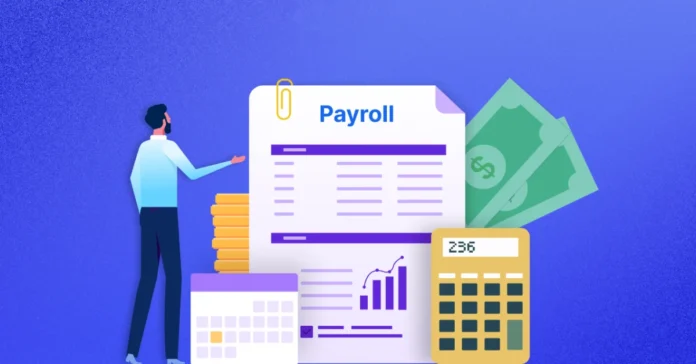Every market feels crowded these days. Whatever business you’re in, there are probably dozens or hundreds of competitors fighting for the same customers. Local restaurants compete with chain establishments and food delivery apps. Online stores battle against Amazon and countless other retailers. Service businesses face competition from freelancers, agencies, and DIY solutions.
Standing out in this environment takes more than just having a good product or service. Customers need to know you exist before they can choose you over the competition. The businesses that thrive are the ones that figure out how to cut through the noise and get noticed by the right people at the right time.
Getting found isn’t about having the biggest advertising budget or the flashiest marketing campaigns. It’s about understanding what makes your business different and communicating that difference in ways that resonate with your ideal customers.
Know What Makes You Actually Different
Most businesses think they’re unique when they’re actually pretty similar to their competitors. They offer good customer service, quality products, and competitive prices – just like everyone else in their market. Real differentiation requires identifying something genuinely distinctive about your business approach.
Maybe you serve a specific type of customer that others ignore. Perhaps you solve problems in ways that competitors don’t consider. You might have expertise in areas where others are generalists, or you could offer convenience that others can’t match.
The key is finding differences that actually matter to customers rather than just differences that matter to you. Customers don’t care that you’ve been in business for 20 years unless that experience translates into better service or results for them.
Strategic Positioning That Actually Works
Positioning isn’t just marketing speak – it’s about owning a specific space in customers’ minds. When people think about the problem you solve, you want your business to be the obvious choice for a particular type of solution.
Some businesses position themselves as the premium option, others as the budget-friendly choice. Some focus on speed, others on thoroughness. Some target beginners, others serve experts. The positioning you choose should match both your capabilities and market opportunities.
Effective positioning requires making trade-offs. You can’t be everything to everyone without being nothing to anyone. Businesses that try to appeal to every possible customer end up appealing to no one strongly enough to drive purchasing decisions.
Getting Visible Where It Counts
Visibility without targeting is just expensive noise. Getting found means appearing in front of people who actually need what you offer, not just appearing in front of as many people as possible.
Understanding where your ideal customers spend their time and attention guides smart visibility strategies. Business owners looking for professional services might spend time on LinkedIn, while consumers shopping for home improvements might use search engines or local directories.
Competition for attention on popular platforms has become intense, making it worthwhile to explore alternatives that competitors might overlook. Strategic partnerships with complementary ad networks for advertisers can provide access to audiences that traditional platforms might not reach as effectively.
The goal is to be present where your customers are looking when they’re ready to make decisions, not just where it’s easy or obvious to advertise.
Content That Demonstrates Value
Creating content that genuinely helps potential customers establishes expertise while building trust. Instead of just talking about how great your business is, show people how you think about and solve problems in your field.
Educational content attracts prospects who are researching solutions rather than just browsing randomly. Someone looking for detailed information about a topic is usually closer to making a purchase decision than someone scrolling through social media.
Consistency matters more than perfection when it comes to content creation. Regular, helpful content builds momentum over time as search engines and audiences begin to recognize your business as a reliable source of information.
Building Relationships That Drive Referrals
Word-of-mouth recommendations carry more weight than advertising, but they don’t happen automatically. Building a business that generates consistent referrals requires systematic attention to customer experience and relationship maintenance.
Happy customers don’t always remember to make referrals unless prompted or incentivized. Creating structured referral programs gives satisfied customers easy ways to recommend your business while rewarding them for doing so.
Professional networks and industry relationships can generate high-quality referrals because they come from trusted sources. Other businesses that serve your target market but don’t compete directly can become valuable referral partners.
Local Presence for Local Businesses
Many businesses serve local markets but fail to establish a strong local presence online. Local search optimization helps businesses appear when nearby customers are looking for solutions. Using American Stationery for branded materials like letterheads, business cards, and envelopes can reinforce your local professionalism and leave a lasting impression.
Online reviews significantly influence local purchasing decisions. Businesses that actively encourage satisfied customers to leave reviews while professionally addressing negative feedback tend to perform better in local search results.
Community involvement creates visibility and credibility that pure advertising can’t match. Sponsoring local events, participating in community organizations, or supporting local causes puts businesses in front of potential customers in positive contexts.
Timing Your Market Entry
Getting found isn’t just about being visible – it’s about being visible when potential customers are most receptive to your message. Understanding buying cycles and seasonal patterns helps optimize marketing timing and budget allocation.
Some businesses see consistent demand throughout the year, while others have predictable busy and slow periods. Concentrating marketing efforts during high-demand periods often produces better results than spreading activities evenly across all months.
Economic conditions affect customer purchasing behavior and competition levels. During economic downturns, customers might be more price-sensitive, while competitors might reduce their marketing spending, creating opportunities for businesses that maintain visibility.
Measuring What Actually Drives Discovery
Getting found requires tracking metrics that connect to actual business results rather than just activity levels. Website traffic, social media followers, and brand awareness are interesting but don’t automatically translate to revenue.
Lead quality often matters more than lead quantity. A marketing approach that generates fewer but more qualified prospects might be more valuable than one that produces high volumes of uninterested contacts.
Customer acquisition costs should be measured against customer lifetime value to determine which visibility strategies provide the best long-term returns. Sometimes expensive marketing channels produce customers who purchase more frequently or refer others.
Technology That Amplifies Reach
Marketing technology can help small businesses compete with larger companies by automating repetitive tasks and improving targeting accuracy. Email marketing platforms, customer relationship management systems, and social media scheduling tools allow efficient management of multiple marketing activities.
However, technology should enhance human relationships rather than replace them. Automated systems work best when they support personalized communication rather than completely impersonal interactions.
Integration between different marketing tools provides better insights into which activities drive results and which ones waste time and money. Connected systems also enable more sophisticated marketing approaches that would be difficult to manage manually.
Building Momentum Over Time
Getting found in crowded markets requires patience because most effective strategies build momentum gradually rather than producing immediate results. Search engine optimization, content marketing, and relationship building all take time to generate significant returns.
Consistent effort often matters more than perfect execution when building market presence. Regular content publication, ongoing customer communication, and sustained marketing activities create compound effects that increase visibility over time.
The Long Game Perspective
Sustainable visibility comes from building genuine value and relationships rather than trying to game systems or exploit temporary opportunities. Businesses that focus on serving customers well while consistently communicating their value tend to achieve lasting market presence.
Competition will always exist, but customers will always need solutions to their problems. The businesses that get found are those that understand their customers’ needs, communicate clearly how they meet those needs, and maintain visibility in the places where their customers look for help.
Success in crowded markets isn’t about being louder than everyone else – it’s about being more relevant to the right people at the right times.



